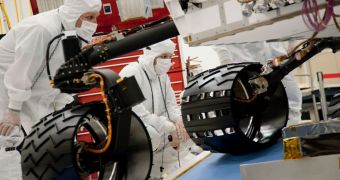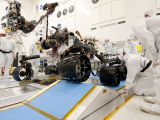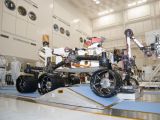Officials at NASA announce that the American space agency's next Mars-bound rover, called Curiosity, is currently making impressive strides towards being ready on time for its planned launch date.
The experts say that the machine, which recently managed to achieve another important milestone when it moved its robotic arm, has now been driving over obstacles in a lab for the past few days.
The tests are meant to assess the performances of the Curiosity platform, on which all other scientific components are to be attached soon. Thus far, everything appears to be progressing smoothly.
At this time, the mission carrying Curiosity – previously known as the Mars Science Laboratory (MSL) – is scheduled to launch in 2011. Arrival at the Red Planet is scheduled for August 2012.
But before the impressive rover can go anywhere, it needs to show that it can move once it reaches our neighboring planet. And this is precisely the goal of the new tests.
They are being carried out at the NASA Jet Propulsion Laboratory (JPL), in Pasadena. The JPL manages Curiosity for NASA, and is managed by the California Institute of Technology (Caltech).
The new rover uses the same type of six-wheel drive train that its predecessors, the Mars Exploration Rovers (MER) use. Spirit and Opportunity have been roaming the planet for nearly seven years.
But what makes MSL stand out is the fact that it's powered by a nuclear reactor. This means that it will be able to operate in very harsh conditions, and that it will not be dependent on the Sun for energy.
Spirit, for example, is currently in hibernation mode, as it doesn't get enough sunlight each day to support operations. It will only be in the Martian spring that the rover will get enough juice to hopefully begin communications with Earth again.
According to the JPL crew, Curiosity also features the same rocker-bogie suspension system as other rovers before it, but with a slight difference.
While this type of system allows the machine to navigate uneven, bumpy terrain, it also makes it prone to becoming stuck in sand. This is why Curiosity has 20-inch wheels, two times higher than Spirit's.
This is bound to be helpful, if the robot happens to stumble upon another patch of loose soil, as the MER component did. Spirit is still stuck at Troy to this day, and is now designated as a stationary science platform.
Due to its nuclear engine, Curiosity will be able to drive further and faster than any other machine sent to Mars, and will also carry instrumentation that could help identify organic molecules on the Red Planet.

 14 DAY TRIAL //
14 DAY TRIAL // 

